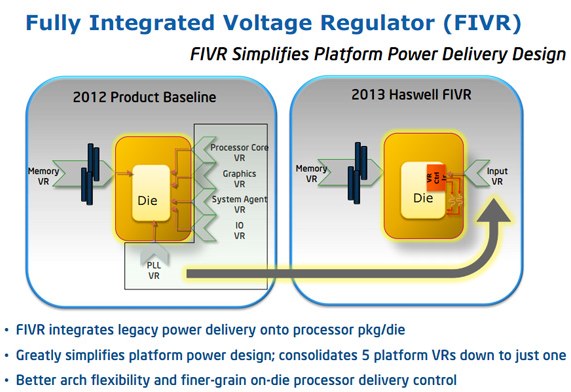The Haswell platform was where Intel introduced FIVR or the fully integrated voltage regulator unit. This placed some of the VR (Voltage Regulation) on the die allowing for motherboards to have less power phases on board. For the upcoming Skylake and including next years Kaby Lake, Intel has decided to go back to the traditional power delivery system with voltage regulation done solely on the motherboard. The main purpose of voltage regulation is to supply voltage to the CPU and maintain or stabilize the demands of the processors.
With FIVR, it served one task, to control Vcore, Vgpu, VCSSA, VCCIO and PLL. The FIVR block on the die also added to heat output which was featured on an already dense 22nm processor. While the latest reports have said Intel will do away with FIVR placing voltage regulation back on the 100-series motherboards, It is rumored the in 2017, Intel will re-introduce FIVR on the series following Skylake and Kaby Lake although the platform’s codename is not confirmed.
 Technology X Tomorrow's Technology Today!
Technology X Tomorrow's Technology Today! 

Going back to FVIR approaching 10nm? Why Intel? I am finding Ivybridge to run hotter than expected due to poor TIM and FIVR… Yet Haswell-E has a proper solder based TIM and is much better, if you are going back to FIVR you will need to solder the die to the HS like you are for the enthusiast chips…
I am asking myself the same question, why oh why… And yet, if so i agree Intel should use solder so people who want to lower as much temp as they can wont have to delid. Not only that but with FVIR and as an LN2 overclocker cold bugs were a problem especially with Haswell where as next gen Skylake we hope to see higher overclocks and lower CB’s. well it is a rumor as well so time will tell